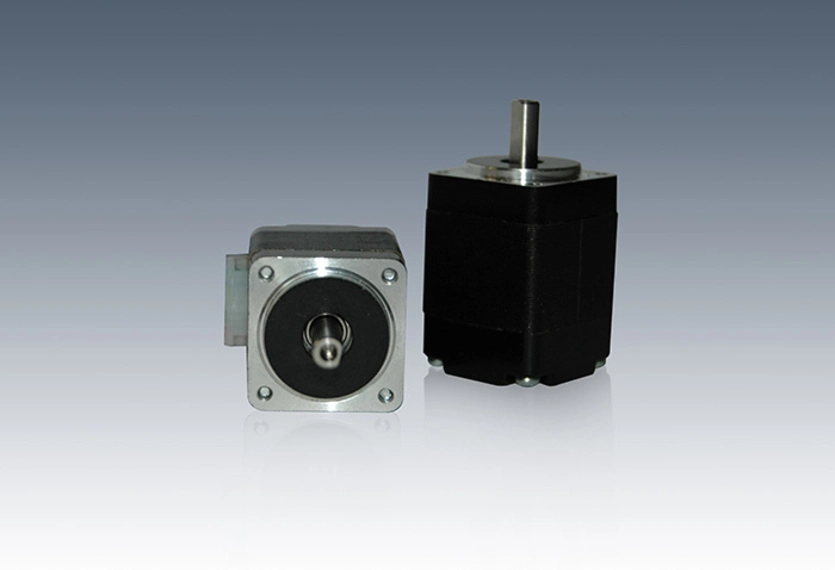Stepper Motor Selection and Sizing
2023-11-23 11:42:54
Stepper motors are widely used in various industries, from robotics to automation, due to their precise control and positioning capabilities. However, selecting the right stepper motor for your application can be a challenging task. Each motor has different characteristics, and understanding the key factors involved in motor selection and sizing is crucial. In this article, we will explore the important considerations and steps involved in choosing the right Stepper motors for your specific needs.

Understanding the Basics: Torque, Speed, Voltage, and Current
When selecting a stepper motor, it's essential to have a clear understanding of the required torque, speed, voltage, and current for your application. Torque and speed are the mechanical outputs that the motor will provide, while voltage and current are the electrical inputs that power the motor.
The operating voltage of a stepper motor can vary, but popular options are 12 and 24 volts. Current, measured in amps, refers to the rate at which electrons flow through the motor. These basic parameters form the foundation of motor selection and sizing.
Additional Factors to Consider
While torque, speed, voltage, and current are the primary considerations, there are other factors that can impact your motor choice. These include:
Load Inertia
Load inertia determines how quickly you can accelerate a load based on the force or torque the motor can generate. Understanding the load inertia is crucial for achieving the desired performance in your application.
Application Type
Consider whether your application requires continuous motion or start-stop operations. Different motors are designed to excel in specific application types, so identifying your needs will help narrow down the options.
Duty Cycle
The duty cycle refers to the ratio of time the motor is "on" compared to when it is "off." Understanding the duty cycle helps determine the motor's power consumption and how long it will be in operation.
Resolution Requirements
For applications that demand high accuracy, hybrid stepper motors are ideal. They provide precise positional control. On the other hand, if accuracy is not a critical factor, a permanent magnet stepper motor may be a cost-effective option.
Utilizing the Speed Torque Curve
The speed torque curve is a powerful tool for selecting and understanding motor performance. It visualizes the relationship between torque and speed. On the Y-axis, you have torque, and on the X-axis, you have speed. This curve provides valuable information such as holding torque, max running speed, max starting speed, pull-out and pull-in curves, start/stop range, and slew range.
Detent Torque and Holding Torque
Detent torque refers to the drag experienced by the motor when it is not engaged or powered on, caused by bearing friction and magnetic traction. Holding torque, on the other hand, is the maximum torque the motor can exert to maintain its position. It is crucial to understand these torque values to ensure the motor can perform the required tasks.
Pull-In and Pull-Out Torque
Pull-in torque is the highest amount of torque a motor can generate instantaneously at any given speed. Pull-out torque, on the other hand, is the highest combination of torque and speed that the motor can achieve, but it requires ramping up to that level. These torque values are important for applications that require rapid acceleration or deceleration.
Start/Stop Range and Slew Range
The start/stop range is the region defined by the edge of the pull-in curve. Within this range, you can accelerate, stop, and even reverse a load without losing a step. It is analogous to driving a car below the speed limit, where your tires maintain traction, ensuring smooth stopping.
The slew range lies between the pull-in and pull-out curves. While operating in this range, you can still accelerate, stop, and reverse, but there is a potential risk of losing a step. Understanding these ranges helps determine the motor's performance limitations.
Conclusion
Selecting the right stepper motor involves considering factors such as torque, speed, voltage, and current, as well as load inertia, application type, duty cycle, and resolution requirements. Additionally, analyzing the speed torque curve and understanding detent torque, holding torque, pull-in torque, pull-out torque, start/stop range, and slew range are crucial for making an informed decision.
By following these guidelines and understanding the specific requirements of your application, you can confidently choose the right stepper motor that will meet your needs and deliver optimal performance. Remember, selecting the appropriate stepper motor is an essential step towards achieving precision and control in various industrial applications.
See What Lunyee Can Do For You
Contact Us
- 8619149417743
- +86-0371-5562 0274
- [email protected]
- Zhengzhou, Henan Province, China
- Mon-Fri: 9:00 - 18:00




